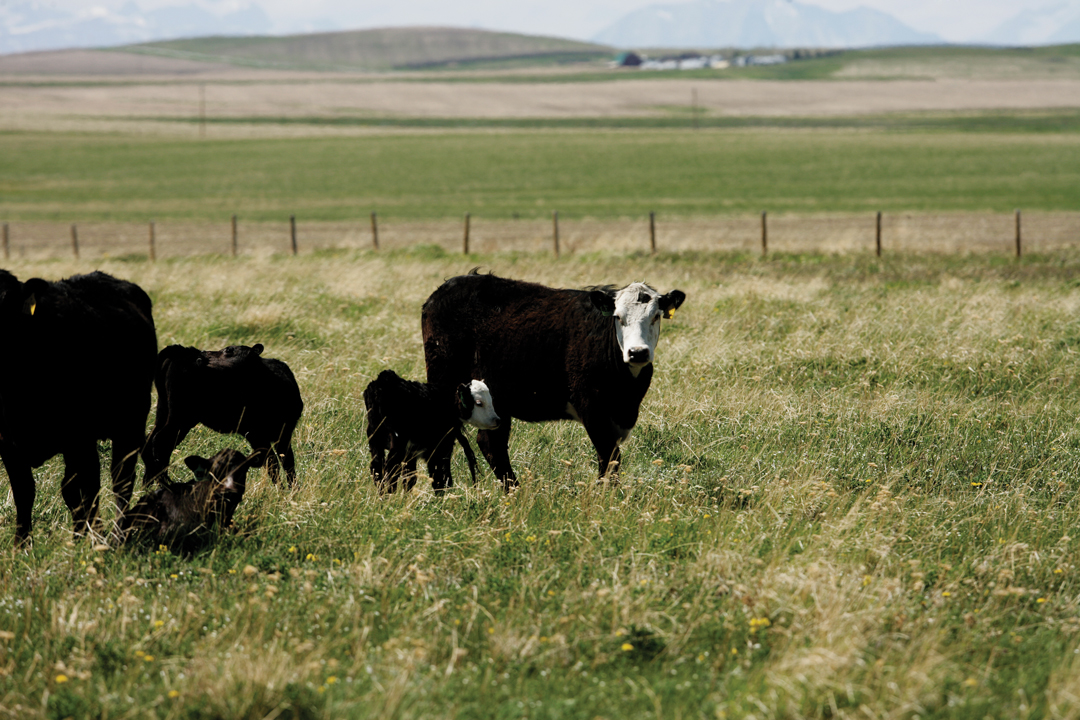GREEN GUARDIAN
BY IAN DOIG • ILLUSTRATION BY EMILY CHU
Chief provincial plant health officer since October 2022, Krista deMilliano is only the second person to hold the job since it was created in February 2019 within the Crop Assurance and Rural Programming branch of Alberta Agriculture and Irrigation. Following scares such as the appearance of jimsonweed in 2015, the Province created this dedicated position to co-ordinate preparedness and response for situations that involve weeds, insects and plant diseases.
Though the public may not be familiar with the existence and activities of deMilliano’s office, she deals with critical agricultural pest issues and has considerable resources and personnel at her disposal. Staff within the Edmonton office hold expertise in plant pathology, entomology, agricultural policy and emergency response. deMilliano also works with the Alberta Plant Health Lab diagnostics team, which supplies pest data and expertise to the province’s ag industry.
GrainsWest: What are your job responsibilities?
Krista deMilliano: First, providing input on policy and legislative changes. I also think about monitoring for emerging pest issues within the province, preparing for and responding to the next plant health emergency.
GW: What existing or emerging threats concern you?
KD: All of the provincially regulated weeds and pests are on my radar. For example, clubroot, grasshoppers and scentless chamomile as well as invasive species such as spotted lanternfly or Palmer amaranth that are brought forward to national committees by the Canadian Food Inspection Agency, Agriculture and Agri-Food Canada or by my provincial counterparts.
GW: When did you discover you were a plant person?
KD: I was raised on a cattle and grain farm in the Lamont area of northeastern Alberta. I helped my parents a lot on the farm growing up, fixing fence, raking hay, helping in the garden or just keeping my mom and dad company on the combine. It was through those experiences I became interested in how the seed you put in the ground becomes a fully mature plant and then turns into food on our table. So, I decided to follow that interest.
GW: How did you find the path to this job as Alberta’s top plant official?
KD: It’s through the experience I gained in school and work that led me here. I attended the University of Alberta for my bachelor of science in agriculture and majored in crop science. While I was in post-secondary, my summer jobs allowed me to gain some experience with canola research and with ag retail by working with crop scouts. My first job out of school was with the M.D. of Beaver County in its agriculture department. I became more familiar with agricultural legislation at that time, like Alberta’s Agricultural Pests Act and the Alberta Weed Control Act. About 10 years ago, I started working with the ministry of agriculture and went through a couple of different areas of business development, crop extension and policy. A combination of these experiences led me here.
GW: How are you uniquely suited to the job?
KD: When an incident occurs, something like the Fort McMurray fire or the 2013 southern Alberta floods or something like avian influenza, I’ve always been really interested in learning about the response behind those events; who was involved, what was needed, what was learned from those events? I’m the person sitting here now thinking, how can this be applied to a response for plant health?
GW: How has this job affected your views on the health and protection of farm crops?
KD: I have a greater understanding of the importance of preventative measures such as integrated pest management and biosecurity for protecting crops. I recognize even more how a healthy crop contributes to sustaining agriculture and food production. My experiences have also shown me that regulation is just one tool in the toolbox for managing pests and there is a lot of power in education by working together with farmers, agricultural organizations and municipalities.
GW: How much of your work pertains to crop science?
KD: With millions of acres in the province seeded to wheat, barley, canola and pulses, and, for example, our growing potato industry, which contributes about $2.3 billion to the Alberta economy, a lot of my work pertains to crop science. My role also covers tree fruits, field vegetables, greenhouse and tree pests, but to a much lesser extent.
GW: How do you translate scientific findings into agricultural policy?
KD: This is through collaborating with many people. We rely on our pathologist and entomologist and weed scientists within the department, as well as scientific experts in industry and federally for biological information on pest surveillance data, as well as their management tools that are available. And then working with our policy analysts, we assess the implications and potential impacts of the scientific information. Of course, there is also engagement with affected stakeholders to help us provide real world context for these issues. And then based on these findings, policy is drafted to present to our minister of agriculture for decisions.
GW: What is a typical plant project you’ve worked on?
KD: As part of a larger process, we recently started reviewing our regulated weeds list. But we brought a team together to review the 75 currently regulated weeds, as well as 15 new weeds. This included reviewing over 1,000 pages of risk assessment information to analyze the risks of these weeds to Alberta to determine if they required reclassification, removal or, in the case of the new weeds, addition to our regulated weeds list. The outcome of that project was a proposed list for broader stakeholder engagement. That list can impact farmers directly because as landowners they may have weeds on their property that they need to be aware of. We’re also scanning for things that might cause a potential trade impact. Of course, any trade disruption would greatly affect our farmers as well.
GW: What is the most unusual project you’ve tackled?
KD: Earlier this year, we held our very first tabletop exercise for plant health emergency response scenario. We brought a small group of staff together to talk through the first 24 to 48 hours of a pest detection. This included who would need to be notified, what would the initial stages of a crop survey look like and what resources are needed for those things. It was a very positive exercise. We had a lot of really great discussions, but we also identified many areas to improve our preparedness.
GW: What else would you like our readers to know about your work?
KD: I wouldn’t be able to do the work that I do without the great staff I have to work with. I know I’ve only been in the role for a year, but the relationships we continue to build with our crop commissions, industry folks and the farmers I’ve met, I wouldn’t be able to do this work without them.
GW: How would you sum up the experiences you’ve had over your first year as chief provincial plant health officer?
KD: It’s been excellent and interesting. The accomplishments of our agricultural industry and the people working within it are amazing. It’s been fantastic learning more about the plant health emergency response side of things and what we can do to try to protect our industry.








Comments